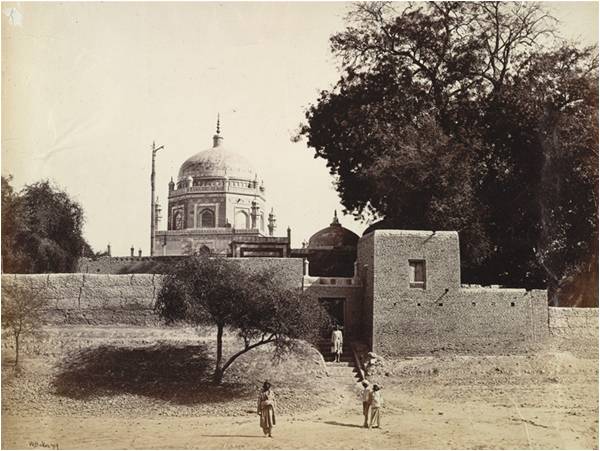
A photograph of the tomb of Shah Shams at Multan taken by William Henry Baker in the 1860s. The British Library incorrectly identifies the shrine in this photograph, from Macnabb Collection, as the tomb of Shams Tabriz.
According to the original caption, “The main body of the building is a square surrounded by a verandah. The upper section is octagonal, surmounted by a hemispherical dome covered in glazed blue tiles. Some parts of the wall are decorated with glazed tiles, mainly blue and white, arranged in geometric patterns. This tomb was rebuilt in 1780.”
Shamsuddin Sabzwari arrived at Multan from Sabzawar, in the west of modern-day Afghanistan, in the early 13th century. While some locals believe he was a Sunni Hanafi, Ismaili Shias say he was sent to India by their 29th Imam to preach the Ismaili Nizari faith. He is honored by Sunnis and Shias alike.
According to the original caption, “The main body of the building is a square surrounded by a verandah. The upper section is octagonal, surmounted by a hemispherical dome covered in glazed blue tiles. Some parts of the wall are decorated with glazed tiles, mainly blue and white, arranged in geometric patterns. This tomb was rebuilt in 1780.”
Shamsuddin Sabzwari arrived at Multan from Sabzawar, in the west of modern-day Afghanistan, in the early 13th century. While some locals believe he was a Sunni Hanafi, Ismaili Shias say he was sent to India by their 29th Imam to preach the Ismaili Nizari faith. He is honored by Sunnis and Shias alike.

